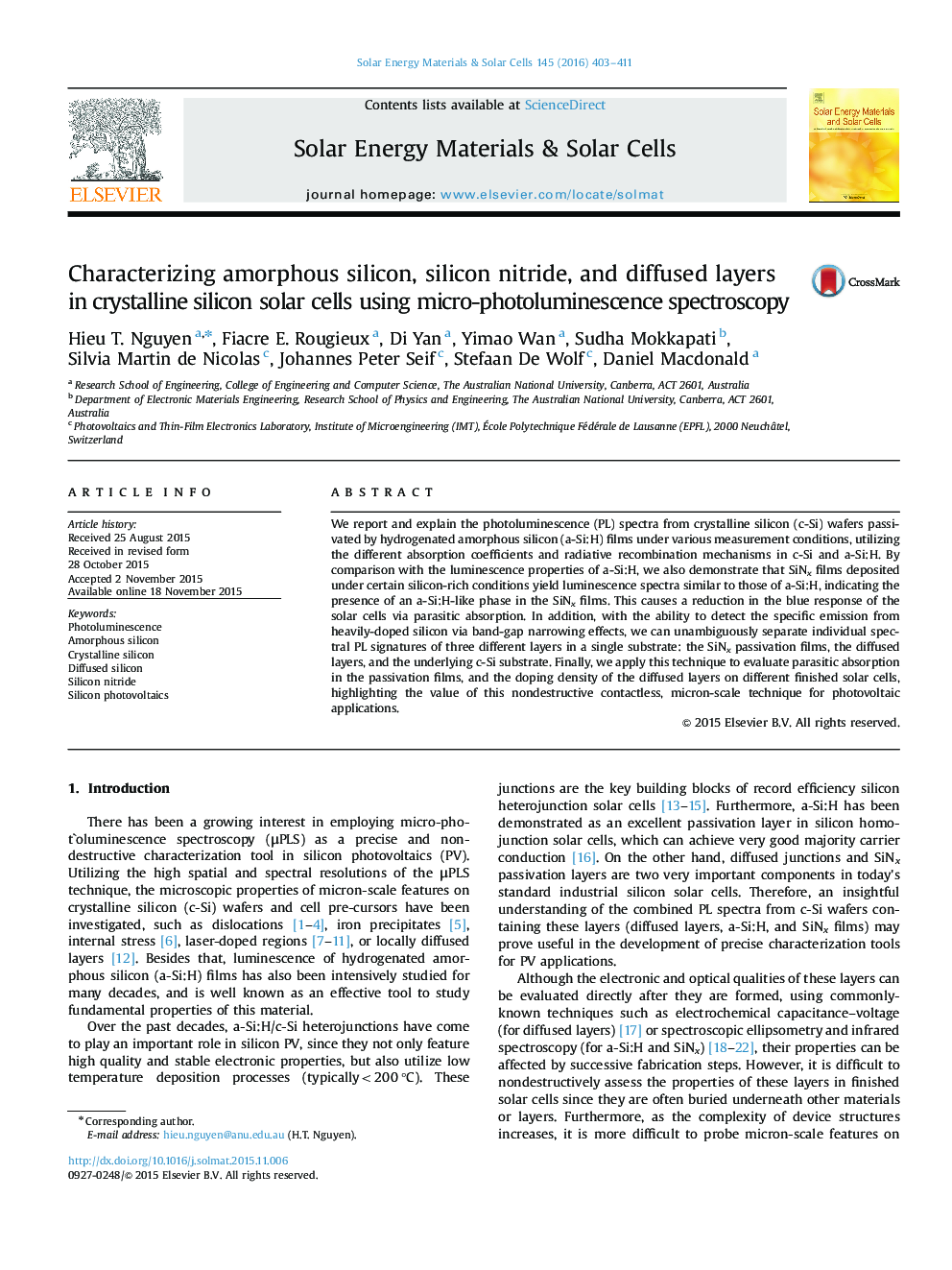| Article ID | Journal | Published Year | Pages | File Type |
|---|---|---|---|---|
| 77696 | Solar Energy Materials and Solar Cells | 2016 | 9 Pages |
•Luminescence spectra from c-Si wafers passivated by a-Si:H films are reported.•Silicon-rich SiNx films yield luminescence spectra similar to those of a-Si:H.•Luminescence signatures from SiNx films, diffused layers, and c-Si substrate are separated.•Parasitic absorption in SiNx and doping density of diffused layers on different c-Si solar cells are evaluated.
We report and explain the photoluminescence (PL) spectra from crystalline silicon (c-Si) wafers passivated by hydrogenated amorphous silicon (a-Si:H) films under various measurement conditions, utilizing the different absorption coefficients and radiative recombination mechanisms in c-Si and a-Si:H. By comparison with the luminescence properties of a-Si:H, we also demonstrate that SiNx films deposited under certain silicon-rich conditions yield luminescence spectra similar to those of a-Si:H, indicating the presence of an a-Si:H-like phase in the SiNx films. This causes a reduction in the blue response of the solar cells via parasitic absorption. In addition, with the ability to detect the specific emission from heavily-doped silicon via band-gap narrowing effects, we can unambiguously separate individual spectral PL signatures of three different layers in a single substrate: the SiNx passivation films, the diffused layers, and the underlying c-Si substrate. Finally, we apply this technique to evaluate parasitic absorption in the passivation films, and the doping density of the diffused layers on different finished solar cells, highlighting the value of this nondestructive contactless, micron-scale technique for photovoltaic applications.
Graphical abstractFigure optionsDownload full-size imageDownload as PowerPoint slide
